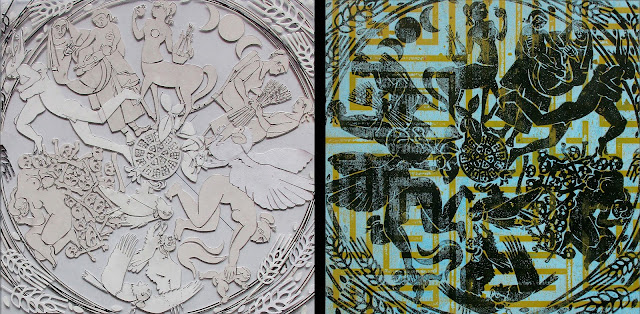Byzantium

"Byzantium" Oil on canvas, 15 3/4 x 39 3/4 in. My painting takes it’s name f ro m the ancient city of Byzantium, at the confluence of trade between the Aegean and Black Sea, founded in 667 by Byzas of Megara, Greece. It would in the course of history become Constantinople, (324 AD), the Eastern capitol of the Christian, Roman Empire and eventually the seat of the Muslim, Ottoman Caliphate, (1453 AD). Today it is called Istanbul and a remarkable city that is representative of what is past, passing and to come. This painting is inspired by Yeats vision of a layered but fixed world that is artificial, unchanging, where ornament or object are perhaps the ideal incarnation of the soul. These lines from his poem “Sailing to Byzantium”, in particular, are a reference for my painting “Byzantium”. Once out of nature I shall never take My bodily form from any natural thing, But such a form as Grecian goldsmiths make Of hammered gold and gold enameling To ...

